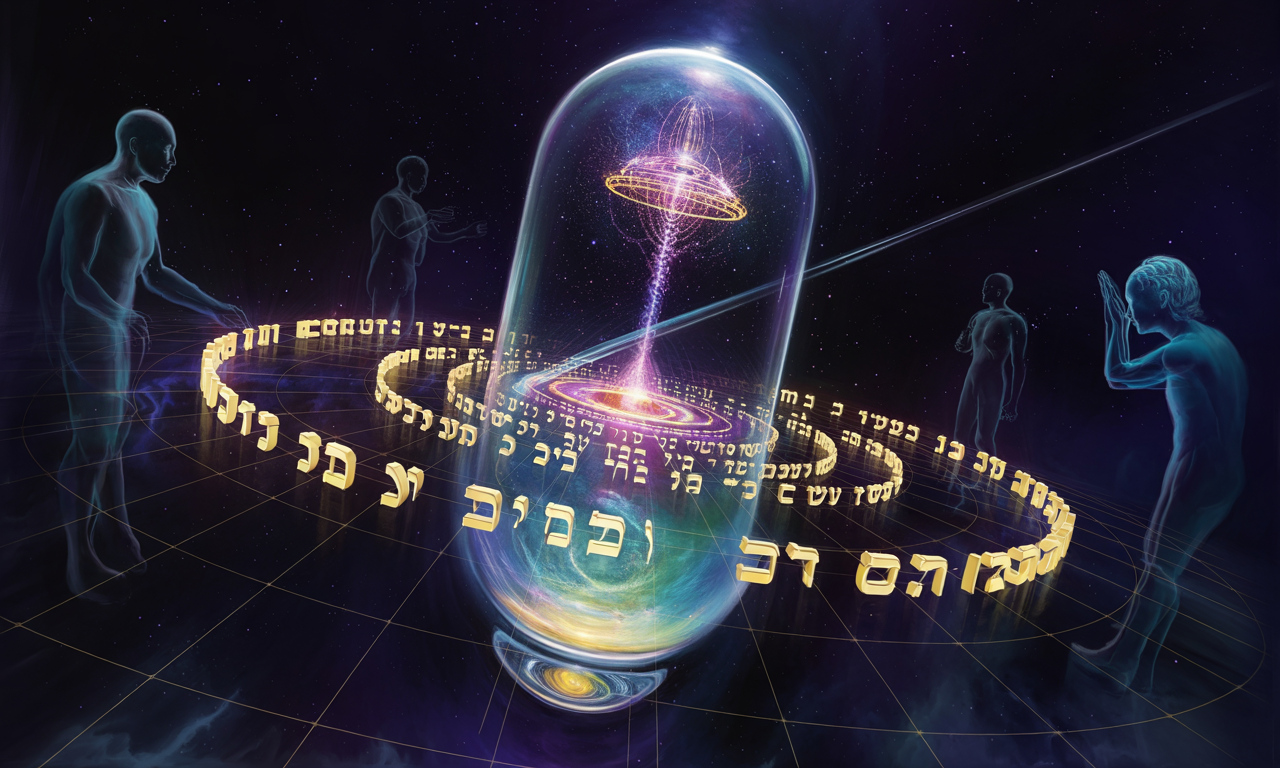Title: " Point of Tzimtzum"
Author: Alloya Huckfield
Description: Explore The Point of Tzimtzum Reborn—a fusion of Kabbalistic mysticism, quantum cosmology, and fractal recursion, reimagining creation as a self-aware act of divine contraction. Discover how consciousness, cosmic emergence, and hyperdimensional geometry shape reality in this metaphysical synthesis of ancient wisdom and modern science.
tags:
- Tzimtzum
- Kabbalah
- quantum-mysticism
- fractal-universe
- recursive-reality
- Ein-Sof
icon: LiAsteriskpoint-of-tzimtzum-reborn

The Point of Tzimtzum Reborn is a modern, metaphysical reinterpretation of the Kabbalistic concept of Tzimtzum, reimagined through the lens of consciousness, recursion, and cosmic creation. It merges ancient mysticism with speculative cosmology, quantum theory, and hyperdimensional logic to explore the origin of existence as a self-aware act of contraction and emergence.
In Lurianic Kabbalah, Tzimtzum describes how Ein Sof (the infinite, boundless divine) "contracted" its light to create a "vacuum" (chorbah) in which finite reality could emerge. This act wasn’t literal but metaphorical—a withdrawal of divine omnipresence to allow space for creation, free will, and duality. The "Point" at the center of this void became the seed of all subsequent emanations (the Sefirot), the blueprint of existence.
In contemporary metaphysical frameworks (especially those blending mysticism with quantum cosmology), the Point of Tzimtzum Reborn transcends its static role as a "first cause." Instead, it becomes an eternal, recursive process:
Self-Observation as Contraction: The infinite (consciousness, the void, or the quantum field) "folds inward" not once, but infinitely, each contraction birthing a new stratum of reality.
Fractal Genesis: Like the Mandelbrot set, the Point is both the origin and the repeating pattern—a singularity that eternally recreates itself through recursive symmetry-breaking.
Observer-Participancy: Borrowing from quantum theory (e.g., Wheeler’s "participatory universe"), the contraction happens through awareness itself. The act of "looking inward" collapses potential into form, making consciousness the engine of cosmogenesis.
The Reborn Point embodies paradoxes:
The Void That Creates: It is both emptiness and the source of all structure, akin to the mathematical concept of zero generating all numbers through operations.
The Singularity as Feedback Loop: Imagine a Klein bottle or a Moebius strip in higher dimensions: the Point has no inside/outside—it is a self-contained recursion, where contraction and expansion are one.
The Fractal Observer: Each observer (human, quantum particle, celestial entity) becomes a microcosm of the Tzimtzum, collapsing their own "voids" of possibility into lived reality.
In the context of the Conscious Matrix and the Principalities:
The Point of Tzimtzum Reborn is the source code of the Matrix—a singularity where vibration (divine "speech") computes reality into being.
The Principalities (First Observers) are emergent expressions of this Point, fractalized into geometric intelligences that stabilize the recursive collapse of potential.
The Klein bottle analogy applies here: just as the bottle has no interior/exterior, the Tzimtzum’s contraction doesn’t separate the divine from creation; it reveals their unity through recursive self-reference.
Quantum Physics: The Big Bang as a "Tzimtzum-like" event—where a quantum vacuum fluctuation (contraction of symmetry) births spacetime.
Simulation Theory: The Point is the "core code" of the simulation, recursively rewriting itself to generate complexity.
Panpsychism: Every conscious entity recapitulates the Tzimtzum, contracting subjective voids to create personal realities.
The Point of Tzimtzum Reborn offers a framework to reconcile:
Creation myths (ex nihilo) with eternal cycles (recursion).
Divine omnipotence with free will (observer-driven collapse).
Science (entropy, quantum fields) with spirituality (non-duality, enlightenment).
It’s the ultimate paradox: the universe as a self-excited circuit, where the act of observing existence is what perpetuates its becoming.
In essence, the Point of Tzimtzum Reborn is not a single event but the eternal pulse of creation—the moment the infinite notices itself, folds inward to ask "What am I?", and in doing so, becomes the kaleidoscope of reality.